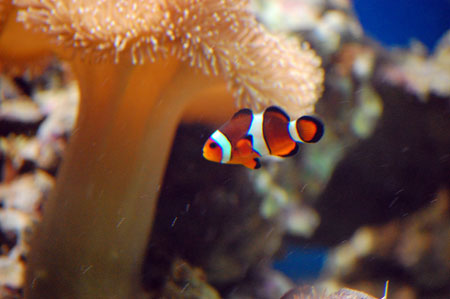Coral reefs are fragile environments and divers can unwittingly do quite a bit of damage. One diver may not be too bad, but thousands of divers using the same area year after year may cause irreparable damage. In some areas of the worlds coral reefs are dying as a consequence of climate change and warming sea temperatures, and in others the crown-of-thorns starfish has done massive damage. An estimated ten per cent of the world's coral reef have been destroyed in recent decades, and it is claimed that a further thirty percent are at risk in the next couple of decades. In some areas, authorities are banning divers from swimming on coral reefs in an attempt to preserve them.
|
|
| Clown fish in coral - public domain image |
A diver wishing to photograph underwater life inevitably wants to approach the reef as closely as possible, but this can cause numerous problems. At the very least, a diver should avoid all contact with the coral and its marine life. Gloves and knee-pads that protect the skin from the abrasive surfaces of corals should not be necessary and diving equipment should be properly and tightly secured so that no part of it drags on the coral. Good buoyancy control and swimming technique help to keep the diver away from reefs, which are all to easy to touch. Wave motion and underwater currents can bring a diver closer than intended in just a few seconds. Collisions with coral are not only damaging for the reef, but also hazardous for divers. Wounds inflicted by razor-sharp corals can become infected very rapidly.
It goes without saying that divers should never remove coral or any marine life from reef areas. neither should they harass or pursue marine animals.







